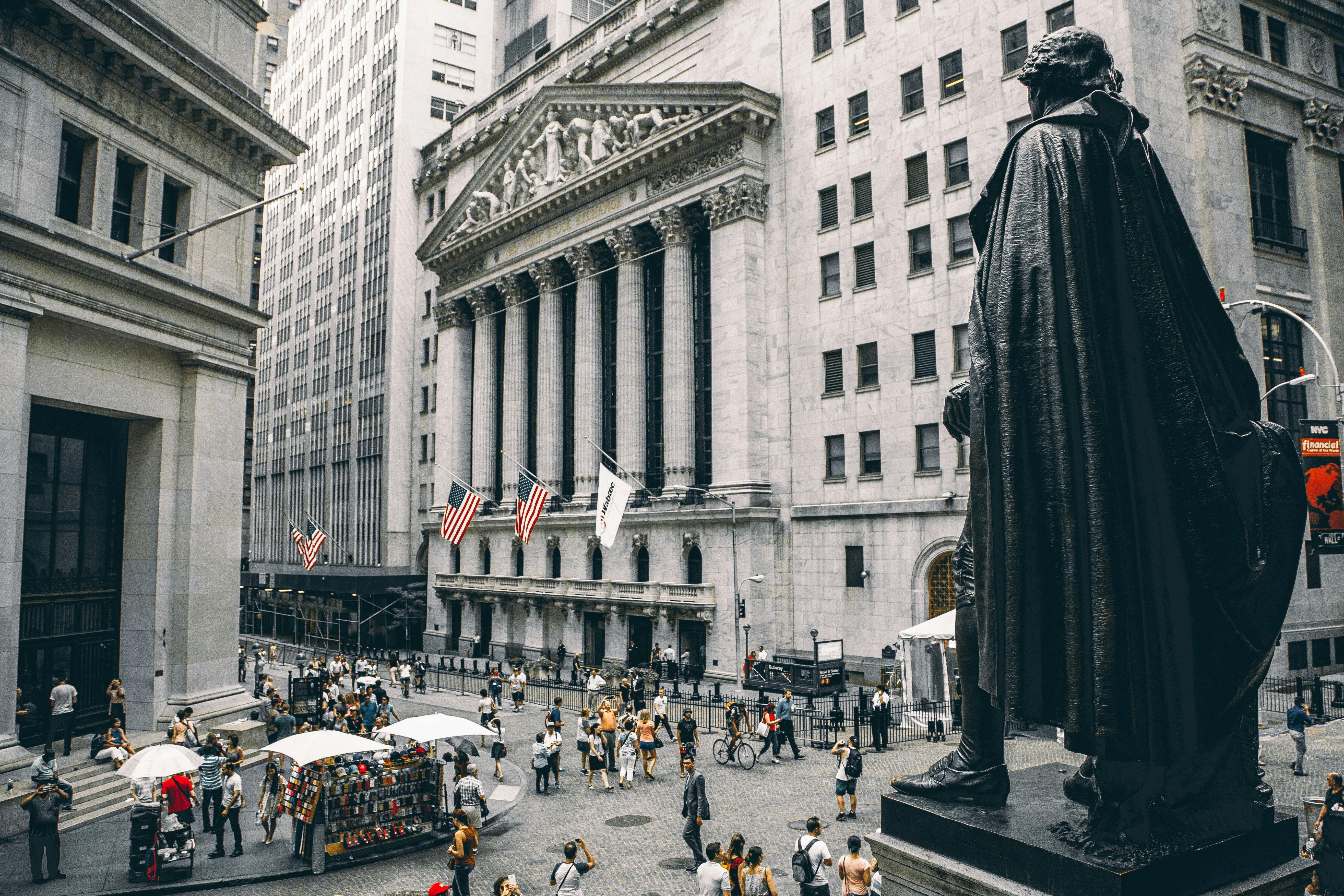Turbulent Times Ahead: U.S. Stock Market Prepares for Another Disheartening Day, However...
A New Era of Market Swings
Stock futures are pointing towards a steep drop for the third day in a row, mirroring the tumultuous ride on Wall Street. Yet, there's a glimmer of hope - potentially.
Futures on Monday morning showed a slight relief from the chaos of the previous night, despite a historic rout in Asia and significant losses in Europe. This hints that the worst selling might be behind us - for now.
Dow futures are down 800 points, signifying a decrease of 2.1%. The S&P 500 is set to open lower by 2.4%, and Nasdaq futures are 2.7% in the red.
Although these declines are sharp and substantial, they are roughly half of their low point from Sunday night. The S&P 500, which had hit a record high less than seven weeks ago, on February 19, was at one point on the brink of bear-market territory - a decline of 20%. This would have been the second-fastest peak-to-bear market shift in history, with the fastest occurring during the 2020 pandemic.
Investors might be seeing a buying opportunity. With the recent and rapid selling, stocks are looking affordable, trading at a historically cheap 15 times future earnings projections. This affordability could fuel a market rebound if investors believe stocks are oversold.
As Demmert said, "We are getting close to a bottom." The significant drops in these deep intraday moves indicate fear-based selling, which often leads to significant rallies.
This potential rebound could complicate the message Wall Street is trying to send to President Donald Trump. The market turmoil could open doors for negotiation.
Trump stated on Air Force One that he has been receiving calls from tech executives and world leaders over the weekend regarding tariffs. He expressed his openness to a deal with China and the European Union, provided they close the trade gap with the United States. However, achieving this feat may not be feasible overnight, or perhaps ever.
If the stock market recovers from its steep declines, Trump may interpret this as a sign that he can withstand the market storm, according to some market analysts.
However, Ed Yardeni, president of Yardeni Research, noted that "Liberation Day" has often been followed by "Annihilation Days" in the stock market.
Trump has tried to argue that recession fears could be a positive thing. For example, US oil prices plunged below $60 for the first time since April 2021, fueled by concerns about global demand in an economic downturn. Treasury yields have also fallen as investors have flocked to the perceived safety of government bonds. This could potentially lower some consumer rates pegged to Treasury yields, including mortgages, credit cards, and auto loans. However, Federal Reserve Chair Jerome Powell stated on Friday that the central bank was in no rush to lower rates.
"Oil prices are down, interest rates are down (the slow-moving Fed should cut rates!), food prices are down, there is NO INFLATION, and the long-abused USA is bringing in Billions of Dollars a week from the abusing countries on Tariffs that are already in place," Trump said in a Truth Social post on Monday morning.
Major uncertainty
Trump and his tariffs have taken a thriving stock market and set it on a path towards becoming a bear market at an unprecedented pace. If the stock market closes in bear territory, it would be the earliest in a new administration a bull market has turned into a bear in the history of the S&P 500, which dates back to 1957.
Among the reasons for the bearish sentiment is the uncertainty the Trump administration has created with its inconsistent messaging about whether tariffs would be open to negotiation. On Wednesday, America will impose significantly higher "reciprocal" tariffs on nearly 90 countries with the highest trade imbalances with the United States. If Trump follows through with these threats, it could well plunge the US and global economies into a recession, according to Goldman Sachs. JPMorgan CEO Jamie Dimon echoed similar concerns in an annual letter to shareholders on Monday.
In addition to the baseline 10% universal tariffs that went into effect on Saturday, Trump has also implemented tariffs on autos, steel, aluminum, and certain goods from Canada and Mexico. He has placed 25% tariffs on certain goods from these countries. And more tariffs could be on the horizon: Tariffs on auto parts are set to go into effect no later than May 3. Meanwhile, Trump has also threatened tariffs on lumber, pharmaceuticals, copper, and microchips, among other products.
Whether or not Trump follows through with these threats could determine whether the economy plunges into a global downturn.
According to Commerce Secretary Howard Lutnick, Trump isn't bluffing. "The tariffs are coming. (Trump) announced it, and he wasn't kidding," Lutnick told CBS's "Face the Nation" on Sunday. "The tariffs are coming. Of course they are."
- Goldman Sachs has warned that if President Trump follows through with his threats to impose higher tariffs on nearly 90 countries, it could plunge the US and global economies into a recession.
- JPMorgan CEO, Jamie Dimon, echoed similar concerns, expressing worry about the potential economic impact of the proposed tariffs in his annual letter to shareholders.
- Secretary of Commerce, Howard Lutnick, stated on CBS's "Face the Nation" that President Trump is serious about implementing the tariffs he has announced, indicating that the economy may be heading towards a global downturn.








